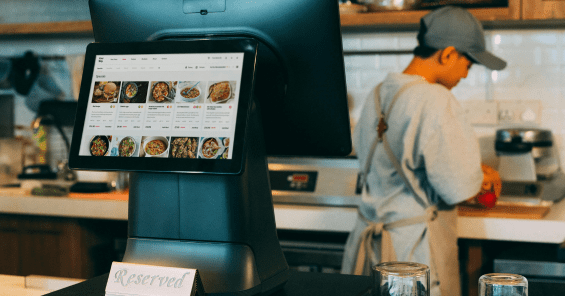

5 Restaurant Scheduling Tips to Ensure You’re Never Short-Staffed
Discover the key to a thriving restaurant business with our blog on effective employee scheduling. From leveraging technology for smarter decisions to fostering employee engagement, learn the five essential tips that ensure your restaurant is never short-staffed, leading to increased productivity and customer satisfaction.
Effective employee scheduling is the backbone of a successful restaurant business. Ensuring that you have the right number of staff members available at all times can significantly impact productivity, customer satisfaction, and ultimately, your bottom line. This importance becomes particularly evident during critical periods, such as the holiday season when customer traffic surges and flu season when more employees call in sick. So, how can you ensure that you are never short-staffed without overstaffing?
In this article, we will delve into 5 essential restaurant scheduling tips, focusing on leveraging technology to make smarter scheduling decisions.
Five Profit-Impacting Trends Shaping the Restaurant Industry in 2023
🔓 Unlock the secrets to restaurant success with actionable strategies for optimizing operations, maximizing profits, and building a loyal customer base.

5 Restaurant Scheduling Tips to Ensure You Are Never Short-Staffed
1. Plan Ahead for Seasonal Fluctuations
Holiday seasons often bring a surge in customer demand. To address this, it's crucial to plan ahead. Create and publish schedules well in advance, taking into account historical data and trends specific to holiday seasons. During these periods, it's common for more employees to call in sick due to various reasons, including cold and flu. If this is a trend in your restaurant, consider hiring seasonal staff to help you get through the busy season. Additionally, you can offer incentives for those who work during busy shifts like New Year's Eve and Valentine’s Day. Planning proactively can mitigate the risks associated with unexpected staffing shortages.
2. Utilize Scheduling Automation for Efficiency
Automation can be a game-changer in scheduling, especially when scheduling a large team or for multiple locations. Modern scheduling tools, like Push Scheduling, offer features that automate tasks, such as scheduling regular shifts, tracking labor costs, and integrating seamlessly with payroll processing. By leveraging a cloud-based scheduling platform, you can schedule your team from anywhere, and they can view it as soon as it is published.
Some additional features to consider when selecting a scheduling platform include:
- A drag-and-drop design, which makes it easy to move around shifts as required
- Automated scheduling and shift templates
- Compliance pop-ups on the scheduler to ensure that you are not scheduling someone into overtime, too many days in a row, or a minor too late
- Easy visibility for each employee’s weekly availability
- Employee self-serve vacation requests and shift swaps
By leveraging scheduling automation, not only will you save time and labor costs, but you can also ensure that your team stays compliant.
3. Cross-Train Your Staff for Flexibility
Cross-training employees to excel in multiple roles is a valuable strategy, particularly when employee call-offs become more common. By identifying and cross-training staff members who can seamlessly step in for their colleagues during unexpected absences or emergencies, you ensure that your restaurant runs smoothly even when key team members are unavailable.
Some examples of roles that can be cross-trained include:
- Training hosts on how to run food and wipe down tables
- Training bussers on how to run food and greet guests
- Instructing food runners on how to greet and seat guests
- Teaching servers how to prepare simple drinks
- Training managers on all roles so that they can jump in where needed
By cross-training your employees, they can support one another when needed. This is helpful when people call in sick or take vacation, but it is also key during fully staffed shifts when everyone needs to pitch in. This approach minimizes the risk of being short-staffed and maintains a high level of service during challenging conditions.
4. Real-Time Analytics for Informed Decisions
Having access to real-time analytics is crucial for effective restaurant scheduling, especially when you need to adapt to seasonal variations and increased sick leaves. Tools like Push Scheduling provide the capability to view labor costs and other key performance indicators (KPIs) as you actively schedule.
To really leverage your data, integrate your scheduling tool with your Point-of-Sale (POS) system. This will allow you to make informed staffing decisions by forecasting sales and busy periods. How does weather impact sales? What day of the week has the least customers? Does it make sense to stay open for lunch? These questions and so much more can be quickly answered by collecting the right data. Find a scheduling tool that will answer them for you, allowing you to make data-driven staffing decisions.
5. Employee Engagement and Empowerment
Your team is the backbone of your business, and engaged employees are more likely to stay committed and provide better service, especially during peak seasons. It is crucial to foster a culture of collaboration, recognition, and support. When your team feels empowered and valued, they are less likely to call in sick and more likely to step up when someone is off.
You can achieve an empowered workforce in the following ways:
- Recognizing and rewarding staff who consistently cover shifts or stay late when needed
- Providing ample vacation time and support so that employees don’t suffer from burnout, requiring last-minute call-offs
- Empowering your staff to swap shifts amongst themselves. This can be achieved through a cloud-based scheduling platform
- Encouraging and listening to feedback
- To the best of your ability, accommodating your team’s shift requests and limitations — if someone has made it clear that they cannot work before 3pm, don’t schedule them before 3pm
When you listen to your team and reward those who go above and beyond, you will build a team that is committed and empowered. They will want to help when they can, limiting the chances of being short-staffed. Additionally, if you continue over-scheduling someone or scheduling them at inconvenient times, they are less likely to help out when needed. Respect fosters respect. Be the leader in fostering an empowered workforce.

MarketMan's restaurant inventory management software is designed to automate inventory control, reduce food costs, and optimize all back-of-house activities. By eliminating manual processes, MarketMan empowers restaurateurs to work smarter, reduce waste, and gain insights for improved profitability. Take the guesswork out of restaurant management—book a demo today to experience how MarketMan can elevate your operations!
Author
Contributors
If you have any questions or need help, feel free to reach out
Don't miss out on maximizing your restaurant's profits! Calculate your ROI with MarketMan
Join over 18,000 restaurants and get the hottest restaurant tips delivered to your inbox
You may also be interested in
Ready to get started?
Talk to a restaurant expert today and learn how MarketMan can help your business






